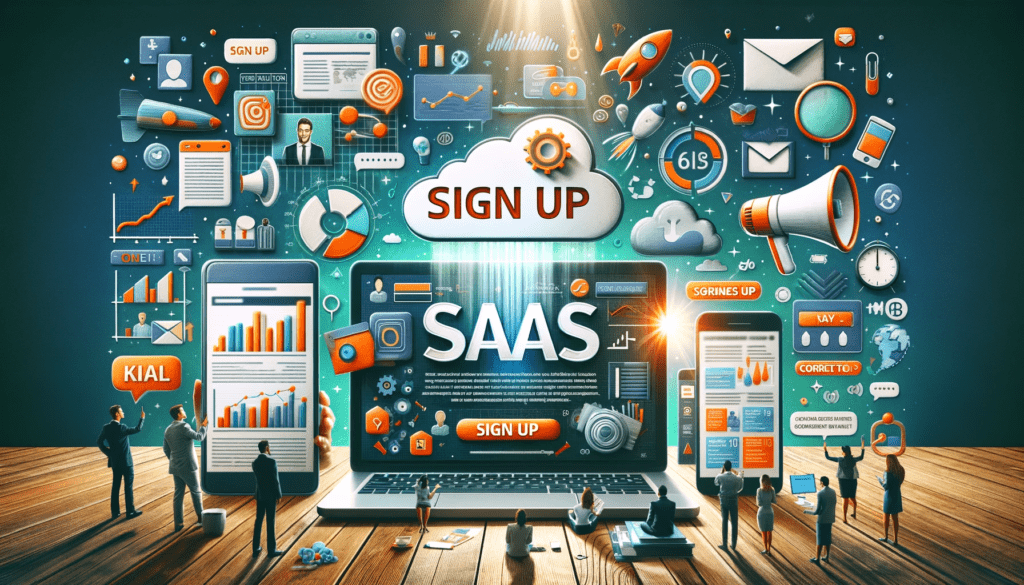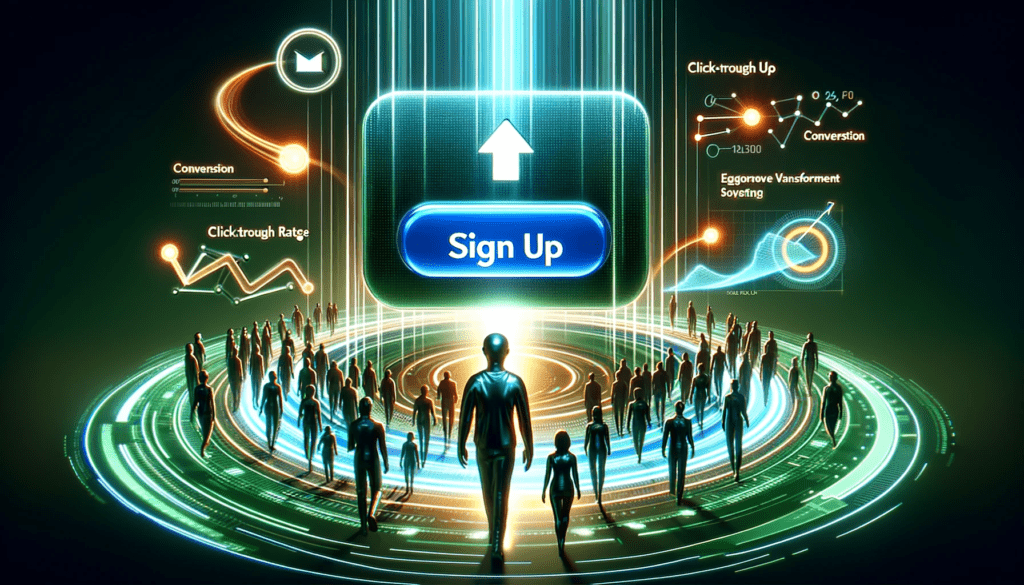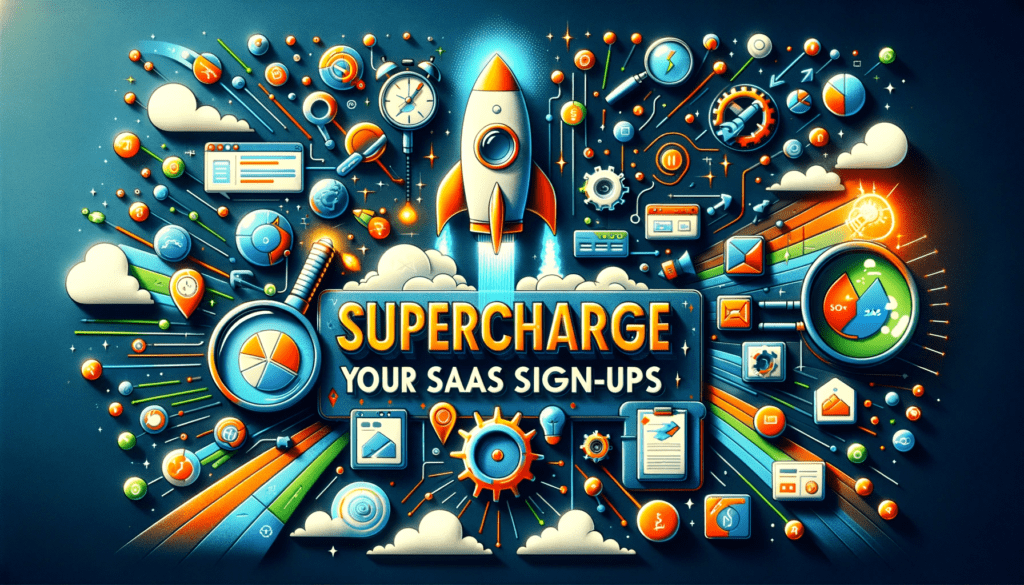
- I. Introduction
- II. Knowing Your Audience
- III. Crafting Compelling Content
- IV. SEO Strategies for Visibility
- V. Content Promotion and Distribution
- VI. Converting Visitors into Users
- VII. Nurturing Customer Relationships
- VIII. Measuring and Analyzing Success
- IX. Leveraging Partnerships and Influencers
- X. Maximizing the Power of Content Upgrades
- XI. Staying Ahead of the Curve
- XII. Conclusion and Call to Action
Introduction
In the fast-paced world of Software as a Service (SaaS), success depends on more than just having a great product.
To thrive, SaaS companies need to master the art of customer acquisition, and one of the most powerful tools in their arsenal is content marketing.
In this section, we’ll explore how content marketing can be a game-changer for SaaS success.
The Power of Content Marketing for SaaS Success
The SaaS industry is highly competitive, with new players entering the market every day.
To stand out and thrive, companies must not only offer exceptional software but also effectively communicate their value to their target audience. This is where content marketing comes into play.
Content marketing is not just about creating blog posts or videos; it’s about crafting strategic and informative content that resonates with your audience.
It helps you build trust, establish authority, and guide potential customers through their journey, from awareness to conversion.
Understanding the SaaS Industry
Before diving into the specifics of content marketing, it’s crucial to understand the unique characteristics of the SaaS industry.
Unlike traditional software, SaaS operates on a subscription model, which means ongoing revenue relies on customer retention and acquisition.
SaaS companies must navigate a complex landscape of customer needs, competitive pressures, and rapidly evolving technology.
The Role of Content Marketing in SaaS Growth
Content marketing is the fuel that powers SaaS growth. It allows you to connect with your target audience, address their pain points, and showcase how your software can solve their problems.
By providing valuable content at each stage of the customer journey, you can guide prospects toward becoming loyal users.
In the following sections, we’ll delve into the specific strategies and tactics that leverage the power of content marketing to boost SaaS sign-ups and drive business success.
Whether you’re a seasoned SaaS provider or a newcomer to the industry, these insights will help you harness the full potential of content marketing for your business. Let’s embark on this journey to SaaS growth together.
Knowing Your Audience

Understanding your audience is the cornerstone of effective content marketing for SaaS success. In this section, we’ll explore how to unlock the secrets of your ideal customers to tailor your content strategy for maximum impact.
Unlocking the Secrets of Your Ideal Customers
Before you can create content that resonates with your audience, you must first define who your audience is.
This involves delving deep into your customer base to identify common characteristics, pain points, and needs.
Understanding your audience allows you to speak directly to their concerns and aspirations.
Start by collecting data on your existing customers. Analyze demographics, behavior, and preferences. Identify patterns that can help you segment your audience into meaningful categories.
For example, you might discover that a significant portion of your users are small business owners looking for cost-effective solutions.
Defining Your Target Audience
Once you’ve gathered data and segmented your audience, it’s time to create detailed buyer personas. Buyer personas are fictional representations of your ideal customers.
They include demographic information, job roles, pain points, goals, and even personal interests. By humanizing your audience through personas, you can tailor your content to address their specific needs and challenges.
Imagine you’re targeting a persona named “SaaS Steve.” Steve is a mid-level manager in a larger enterprise, and he’s primarily concerned with streamlining processes and improving efficiency.
Knowing this, you can create content that speaks directly to Steve’s pain points, such as articles on workflow optimization and case studies highlighting success stories in similar companies.
Building Personas for Precision
Building accurate personas is an ongoing process that involves research and feedback. You can gather insights through surveys, interviews, and monitoring social media interactions.
The goal is to refine your understanding of your audience continually.
By knowing your audience inside and out, you can tailor your content to address their specific challenges and goals.
In the next sections, we’ll explore how to create content that not only speaks to your audience but also compels them to take action, ultimately boosting your SaaS sign-ups.
Crafting Compelling Content

Crafting compelling content is at the heart of successful content marketing for SaaS companies.
In this section, we’ll delve into the essential aspects of creating quality content that not only engages your audience but also drives conversions.
Creating Quality Content That Converts
Quality content is the linchpin of your content marketing strategy. It’s what grabs your audience’s attention, provides value, and ultimately convinces them to take action, such as signing up for your SaaS product.
To create quality content, start by understanding the pain points, challenges, and questions your target audience has. What problems can your SaaS solution solve for them? What information are they seeking?
Then, focus on providing solutions and valuable insights. Your content should be informative, educational, and actionable.
If you can help your audience solve their problems or achieve their goals through your content, you’re on the right track.
Keywords: The Building Blocks of Content
Keywords are the foundation of SEO and content creation. They are the words and phrases that your audience uses when searching for information online.
Identifying and using the right keywords in your content can significantly impact your visibility in search engines.
Keyword research is crucial. Tools like Ahrefs and SEMrush can help you identify relevant keywords in your industry.
Once you have a list of keywords, strategically incorporate them into your content. However, avoid keyword stuffing, as it can harm your search engine rankings and readability.
For example, if you’re offering project management software, your content might include keywords like “project management tips,” “task tracking software,” or “team collaboration tools.”
These keywords should flow naturally within your content to provide a seamless reading experience.
Mastering the Art of Storytelling
Storytelling is a powerful tool in content marketing. It allows you to connect with your audience on a personal level, making your brand more relatable. Effective storytelling can turn a bland, technical topic into a captivating narrative.
Consider using real-life examples, case studies, or customer success stories to illustrate the benefits of your SaaS product. Share the journey of how your product helped a customer overcome challenges and achieve success.
By weaving storytelling into your content, you create an emotional connection with your audience, making them more likely to trust your brand and consider your SaaS solution.
Crafting compelling content involves a deep understanding of your audience, the strategic use of keywords, and the art of storytelling.
In the next section, we’ll explore how SEO strategies can boost the visibility of your content, ensuring that it reaches the right audience.
SEO Strategies for Visibility

To boost your SaaS sign-ups, it’s crucial to ensure that your content gets noticed by your target audience. Search Engine Optimization (SEO) is the key to dominating search engines and driving organic traffic to your website.
In this section, we’ll explore the impact of SEO on SaaS success and dive into both on-page and off-page SEO tactics.
The Impact of SEO on SaaS Success
SEO plays a pivotal role in the success of SaaS companies.
When potential customers search for solutions related to your SaaS product, you want your website to appear at the top of search engine results pages (SERPs).
This visibility can make a significant difference in attracting qualified leads and sign-ups.
Effective SEO involves optimizing your website and content to align with the keywords and phrases your audience is searching for.
By ranking higher in search results, you increase the chances of users discovering your SaaS offering.
Consider this scenario: a small business owner is looking for project management software to streamline their operations. They go to Google and type in “best project management tools for small businesses.”
If your content ranks high for this search query, there’s a strong possibility that this user will visit your site, learn about your SaaS solution, and potentially sign up.
On-Page and Off-Page SEO Tactics
On-page SEO involves optimizing individual web pages to rank higher and earn more relevant traffic in search engines.
This includes optimizing meta titles and descriptions, using header tags, creating high-quality content, and ensuring that your website is mobile-friendly.
Off-page SEO, on the other hand, focuses on activities outside your website that influence your search engine rankings.
Key elements of off-page SEO include building high-quality backlinks, engaging in social media marketing, and leveraging guest blogging opportunities.
A robust SEO strategy for SaaS should encompass both on-page and off-page tactics.
By optimizing your website for search engines and building a strong online presence, you can enhance your visibility and drive more potential customers to your site.
In the next section, we’ll explore content promotion and distribution strategies, including leveraging social media channels and email marketing, to ensure that your content reaches the right audience and drives sign-ups.
Content Promotion and Distribution

To boost your SaaS sign-ups, you’ve crafted compelling content, but now it’s time to ensure it reaches the right eyes. Content promotion and distribution are essential aspects of your content marketing strategy.
In this section, we’ll explore how to effectively get your content in front of your target audience by leveraging social media channels and using email marketing as your secret weapon.
Leveraging Social Media Channels
Social media is a powerful tool for content promotion. It provides a platform to reach a wide and diverse audience, engage with potential customers, and drive traffic to your website. Here are some key strategies for leveraging social media:
- Choose the Right Platforms: Identify the social media platforms that align with your target audience. For B2B SaaS, LinkedIn might be a primary focus, while B2C SaaS may find success on platforms like Instagram and Facebook.
- Consistent Posting: Maintain a regular posting schedule to keep your audience engaged. Share a mix of content, including blog posts, infographics, videos, and industry insights.
- Engage and Interact: Respond to comments and messages promptly. Engage with your audience by asking questions, running polls, and encouraging discussions around your content.
- Paid Advertising: Consider using paid social media advertising to boost the reach of your content. Platforms like Facebook and LinkedIn offer targeted advertising options that can be highly effective.
- User-Generated Content: Encourage your users to share their success stories or experiences with your SaaS product. User-generated content can be a powerful trust-building tool.
Email Marketing: The SaaS Marketer’s Secret Weapon
Email marketing remains a highly effective channel for reaching your audience and nurturing leads. Here’s how you can make the most of it:
- Segment Your Email List: Divide your email list into segments based on user behavior, preferences, and demographics. Send tailored content and offers to each segment.
- Drip Campaigns: Set up automated drip email campaigns that guide leads through the sales funnel. Provide valuable information at each stage to nurture them towards conversion.
- Personalization: Use personalization in your emails, addressing recipients by name and recommending content or features based on their interactions with your website.
- A/B Testing: Experiment with different email subject lines, content formats, and send times through A/B testing to determine what resonates best with your audience.
- Optimize for Mobile: Ensure that your email templates are mobile-responsive, as a significant portion of users access emails on mobile devices.
By effectively promoting your content on social media and utilizing the power of email marketing, you can increase the visibility of your SaaS offering and attract more sign-ups.
Next, we’ll dive into the crucial process of converting visitors into users through the conversion funnel and the use of effective Calls to Action (CTAs).
Converting Visitors into Users

Turning website visitors into active users of your SaaS product is where the real magic happens.
This section will delve into the conversion funnel, the significance of effective Calls to Action (CTAs), and optimizing landing pages for maximum conversions.
The Conversion Funnel: Turning Interest into Action
The conversion funnel, also known as the sales or marketing funnel, represents the journey your website visitors take from initial awareness to becoming loyal users.
It consists of several stages, including awareness, consideration, and decision. Let’s explore how to guide potential users through this funnel:
- Awareness: Attract visitors through valuable content, SEO, and social media promotion. Make them aware of your SaaS offering’s benefits.
- Consideration: Provide in-depth content, case studies, and product demos to help users evaluate your solution. Highlight unique selling points and address their pain points.
- Decision: Encourage users to take action through CTAs that lead to sign-up or purchase. Offer free trials, limited-time offers, or discounts to prompt decisions.
The Power of Effective Calls to Action (CTAs)
CTAs are the gateway to conversion. They prompt users to take the desired action, whether it’s signing up, downloading an ebook, or starting a free trial. Here’s how to make CTAs work for you:
- Clarity: Your CTAs should be clear and concise. Use action-oriented words like “Get Started,” “Sign Up Now,” or “Download.”
- Placement: Position CTAs prominently on your website, especially on high-traffic pages. They should be easily visible without scrolling.
- Design: Make CTAs visually appealing with contrasting colors that stand out. Use buttons or banners to make them clickable.
- Relevance: Tailor CTAs to match the content and the user’s stage in the conversion funnel. For instance, a blog post about a specific feature should have a CTA related to that feature.
- Testing: Conduct A/B testing to determine which CTAs perform best. Experiment with different text, colors, and placements to optimize conversion rates.
Optimizing Landing Pages for Conversions
Landing pages play a pivotal role in converting visitors into users. When a user clicks on a CTA, they should land on a page designed for conversion. Here’s how to optimize your landing pages:
- Simplicity: Keep landing pages clutter-free with a single, clear CTA. Minimize distractions and navigation options.
- Compelling Headlines: Use attention-grabbing headlines that convey the value of your SaaS offering.
- Engaging Copy: Craft persuasive and concise copy that highlights benefits and addresses pain points.
- Visuals: Incorporate relevant images, videos, or infographics to enhance understanding.
- Forms: If a sign-up form is necessary, keep it brief and ask for only essential information. Long forms can deter potential users.
- Trust Signals: Display trust badges, customer testimonials, or security certifications to build credibility.
By implementing a well-defined conversion funnel, persuasive CTAs, and optimized landing pages, you can significantly increase the number of visitors who convert into active users. In the next section, we’ll explore nurturing customer relationships through email marketing, webinars, and valuable resources.
Nurturing Customer Relationships

Building long-lasting relationships with your SaaS customers is the key to success. In this section, we’ll explore how email marketing, webinars, and valuable resources can help you connect with your audience, provide ongoing value, and foster loyalty.
Email Marketing for Customer Engagement
Email remains one of the most effective communication channels for nurturing customer relationships. Here’s how to leverage it:
- Segmentation: Divide your email list into segments based on user behavior, preferences, or demographics. This allows you to send targeted and personalized content.
- Welcome Emails: Send a warm welcome to new users. Use this opportunity to introduce them to your product’s features and benefits.
- Educational Content: Provide educational content through email newsletters. Share tips, best practices, and how-to guides related to your SaaS offering.
- Drip Campaigns: Create automated drip email campaigns that deliver relevant content over time. For example, a series of onboarding emails can help users get started with your product.
- Feedback Loops: Encourage users to provide feedback and reviews through email surveys. This not only helps you improve but also shows that you value their opinions.
- Exclusive Offers: Reward loyal customers with exclusive offers, discounts, or early access to new features. Make them feel special and appreciated.
Providing Value Through Webinars and Resources
Webinars are powerful tools for engaging with your audience in real-time and sharing valuable insights. Here’s how to make the most of webinars:
- Educational Webinars: Host webinars that educate users on industry trends, product updates, or solving common challenges. Use webinars to showcase your expertise.
- Q&A Sessions: Conduct live Q&A sessions where users can ask questions and get instant answers. This builds trust and fosters a sense of community.
- Recorded Webinars: Make recorded webinars accessible to those who couldn’t attend live. Offer them as on-demand resources for continuous learning.
- Resource Libraries: Create a library of resources such as ebooks, whitepapers, case studies, and templates. Make these available for free or as part of a premium subscription.
- User Communities: Encourage users to join online communities, forums, or discussion groups related to your SaaS product. These spaces can foster peer-to-peer support and engagement.
By actively nurturing customer relationships through email marketing, engaging webinars, and valuable resources, you can enhance user satisfaction, reduce churn, and turn your customers into loyal advocates.
Next up, we’ll dive into the world of metrics, analytics, and continuous improvement to ensure your content marketing efforts are on track and delivering results.
Measuring and Analyzing Success

In the world of content marketing for SaaS, it’s not enough to create and distribute content; you must also measure its performance and continuously refine your approach.
In this section, we’ll delve into the critical aspects of metrics, analytics, and continuous improvement to ensure your content marketing efforts are yielding the best results.
Tracking Key Performance Indicators (KPIs)
To gauge the effectiveness of your content marketing strategy, you need to identify and track relevant KPIs.
These metrics provide insights into what’s working and what needs adjustment. Here are some key KPIs for SaaS content marketing:
- Traffic Metrics: Monitor website traffic, including the number of visitors, page views, and the sources of traffic. Google Analytics is a valuable tool for this.
- Conversion Rate: Measure how well your content converts visitors into leads or paying customers. This can be tracked through web forms, sign-ups, or purchases.
- Bounce Rate: Assess the percentage of visitors who navigate away from your site after viewing only one page. A high bounce rate may indicate a lack of engagement.
- Customer Acquisition Cost (CAC): Calculate the cost required to acquire each new customer through your content marketing efforts. This helps in optimizing your budget.
- Customer Lifetime Value (CLV): Determine the total value a customer brings to your business over their lifetime. This is crucial for assessing the long-term impact of your content.
- Social Engagement: Monitor likes, shares, comments, and other social interactions with your content. Engagement metrics reflect audience interest.
- Click-Through Rate (CTR): For email campaigns or paid ads, CTR measures how often people click on your links or CTAs. It’s a vital email marketing KPI.
- Keyword Rankings: Keep an eye on your website’s ranking for target keywords in search engines. Tools like SEMrush and Ahrefs can help with this.
- Churn Rate: In a SaaS business, customer retention is key. Calculate your churn rate to see how many customers you’re losing over time.
- Content Performance: Analyze which types of content (e.g., blog posts, videos, infographics) are performing best in terms of engagement and conversion.
A/B Testing for Enhanced Results
A/B testing (or split testing) is a method of comparing two versions of a webpage or email to determine which one performs better.
By making small changes to your content and measuring the impact, you can optimize for higher conversions. Here’s how to implement A/B testing:
- Identify Elements: Choose specific elements to test, such as headlines, CTAs, images, or form fields. Start with elements that have a significant impact on user behavior.
- Create Variations: Develop different versions of the chosen element. For example, if testing a CTA button, you might try different colors, text, or placement.
- Randomize and Test: Randomly show one of the variations to each visitor. Use A/B testing tools to ensure accurate data collection.
- Measure Results: Track and compare the performance of the variations. Look for improvements in conversion rates, click-through rates, or other relevant metrics.
- Iterate and Refine: Based on the results, choose the winning version and implement it. Then, continue testing and refining other elements to further optimize your content.
By consistently measuring performance and conducting A/B tests, you can refine your content marketing strategy, focus resources on what works best, and ultimately drive more sign-ups for your SaaS product.
In the next section, we’ll explore the power of collaborations and partnerships in accelerating your SaaS growth journey.
Leveraging Partnerships and Influencers

In the ever-evolving landscape of content marketing for SaaS, partnerships and influencers can be the secret sauce to supercharge your growth.
Moving on, we’ll explore the art of collaborating for SaaS growth, partnering with industry influencers, and leveraging strategic alliances and co-marketing to expand your reach and drive more sign-ups.
Collaborating for SaaS Growth
Collaboration is at the heart of effective content marketing. By teaming up with others in your industry or related niches, you can tap into new audiences and create content that resonates with a broader spectrum of potential customers.
Here are some collaboration strategies:
- Guest Blogging: Invite experts or thought leaders in your industry to write guest blog posts for your website. In return, offer to contribute content to their blogs. This cross-promotion exposes your brand to new audiences.
- Joint Webinars and Workshops: Partner with complementary SaaS companies to host webinars or workshops. These events can showcase your expertise, provide value to your audience, and generate sign-ups from attendees.
- Collaborative Content: Co-create content like ebooks, whitepapers, or infographics with other businesses. Each partner can promote the content to their respective audiences, increasing its reach and impact.
- Podcast Swaps: If you run a podcast, consider swapping guest appearances with other podcast hosts in your niche. This exposes your insights to a new group of potential users.
- Social Media Takeovers: Let influencers or collaborators take over your social media accounts for a day. They can engage with your audience and introduce your brand to their followers.
Partnering with Industry Influencers
Influencer marketing has become a potent tool in the content marketing arsenal. Industry influencers have established trust and authority in your niche, and their endorsement can carry significant weight.
Here’s how to partner with influencers effectively:
- Identify the Right Influencers: Research and identify influencers whose audience aligns with your target users. Tools like BuzzSumo and Social Blade can help find relevant influencers.
- Build Relationships: Connect with influencers on social media, comment on their content, and share their posts. Building a relationship before reaching out for collaboration can be more effective.
- Co-Creation: Collaborate with influencers to create content such as guest blogs, videos, or social media takeovers. Ensure that the content is authentic and valuable to both your audience and theirs.
- Sponsored Content: Consider sponsoring influencer content where they promote your SaaS product. Be transparent about the partnership to maintain trust with their followers.
- Track Results: Use UTM parameters and affiliate links to track the performance of influencer collaborations. Monitor metrics like clicks, conversions, and ROI to assess the impact.
Strategic Alliances and Co-Marketing
Strategic alliances involve partnering with other SaaS companies or service providers that offer complementary solutions.
Co-marketing campaigns leverage these partnerships to create win-win scenarios. Here’s how to approach it:
- Identify Complementary Partners: Look for businesses that offer products or services that align with yours but do not directly compete. For example, if you offer project management software, partner with a time-tracking tool.
- Joint Campaigns: Create joint marketing campaigns, such as ebooks, webinars, or events, that showcase how your products work well together. Highlight the benefits of using both solutions.
- Shared Promotion: Collaboratively promote the campaign to both of your audiences. This expands your reach and can result in cross-referrals and sign-ups.
- Co-Branding: Consider co-branded landing pages or content to emphasize the partnership and make it easy for users to access both products.
- Measure Success: Track the success of co-marketing campaigns by monitoring the number of sign-ups generated through the partnership. Analyze the ROI and consider long-term collaborations with successful partners.
Leveraging partnerships and influencers can significantly boost your content marketing efforts and drive more sign-ups.
Continuing, we’ll explore the concept of content upgrades and how they can enhance user engagement and conversions on your SaaS platform.
Maximizing the Power of Content Upgrades

Content upgrades are a potent strategy to enhance user engagement and drive conversions in the world of SaaS content marketing.
Here, we will delve into what content upgrades are, why they are effective, and the strategies for creating and implementing them to increase your SaaS sign-ups.
What Are Content Upgrades and Why Are They Effective?
Content upgrades are targeted, valuable pieces of content that are specifically created to complement a blog post, article, or other content on your website.
They are designed to provide readers with additional, in-depth information on a topic in exchange for their contact information, typically their email address. Content upgrades are effective for several reasons:
- Relevance: Content upgrades are highly relevant to the content the reader is already engaged with, making them more likely to opt in and download the upgrade.
- Value Exchange: Readers perceive content upgrades as valuable resources, making them more willing to provide their contact information in exchange.
- Lead Generation: Content upgrades are excellent lead magnets, helping you build a list of engaged and interested prospects.
- Segmentation: By offering different content upgrades for various topics, you can segment your email list based on user interests, enabling more targeted and personalized marketing.
- Conversion Boost: Content upgrades can significantly increase conversion rates, turning casual website visitors into potential SaaS users.
Strategies for Creating and Implementing Content Upgrades
Creating and implementing content upgrades effectively involves a strategic approach. Here are steps to consider:
- Identify High-Performing Content: Analyze your existing content to identify pieces that are already performing well in terms of traffic and engagement. These are prime candidates for content upgrades.
- Understand Your Audience: Determine what additional information or resources would be most valuable to your audience regarding the topic of the chosen content.
- Create High-Quality Upgrades: Develop content upgrades that are comprehensive, well-researched, and add genuine value. Common types of content upgrades include ebooks, checklists, templates, infographics, and webinars.
- Optimize Landing Pages: Create dedicated landing pages for each content upgrade. These pages should be clear, concise, and focused on the benefits of downloading the upgrade.
- Implement Opt-In Forms: Add opt-in forms within or at the end of the content where readers can subscribe to access the content upgrade. Make the opt-in process simple and user-friendly.
- Deliver Content Securely: Once users opt in, ensure a seamless delivery process for the content upgrade. Use an automated email marketing system to send the resource promptly.
- Segment and Nurture Leads: Based on the content upgrade they downloaded, segment your leads into relevant email lists. Create tailored email campaigns to nurture these leads and guide them towards signing up for your SaaS product.
- Test and Optimize: Continuously monitor the performance of your content upgrades. A/B test different titles, designs, and placements to optimize conversion rates.
- Promote Your Upgrades: Promote your content upgrades across various channels, including social media, email marketing, and within related blog posts.
- Measure Results: Track the impact of content upgrades on your SaaS sign-ups and overall lead generation efforts. Analyze conversion rates, click-through rates, and the quality of leads generated.
By strategically incorporating content upgrades into your content marketing strategy, you can provide value to your audience, generate leads, and increase the number of users signing up for your SaaS product.
Coming up, we will explore how to stay ahead of the curve by adapting to industry changes and leveraging the potential of artificial intelligence (AI) in content marketing.
Staying Ahead of the Curve

In the dynamic landscape of content marketing for SaaS, staying ahead of industry changes is paramount to sustaining success.
We will explore the strategies and mindset needed to adapt to the latest trends and harness the power of artificial intelligence (AI) in your content marketing efforts.
Keeping Abreast of the Latest Trends
The digital world is in a constant state of evolution, with new technologies, trends, and consumer behaviors emerging regularly. To remain competitive, you must stay informed about the latest industry trends. Here’s how:
- Continuous Learning: Allocate time for continuous learning. Attend webinars, conferences, and workshops related to content marketing and SaaS to keep up with the latest developments.
- Industry Publications: Subscribe to industry-specific publications, blogs, and newsletters. These sources often provide insights into emerging trends and best practices.
- Competitor Analysis: Keep a close eye on your competitors. Analyze their content strategies and identify any new tactics or approaches they are implementing.
- Social Listening: Utilize social listening tools to monitor conversations and trends related to your industry and brand on social media. This can provide valuable insights into what’s currently relevant to your audience.
- Networking: Build and maintain a strong professional network within the SaaS and content marketing communities. Networking can lead to valuable discussions and opportunities for collaboration.
The Role of Artificial Intelligence (AI) in Content Marketing
Artificial intelligence has become a game-changer in content marketing, offering innovative solutions for creating, distributing, and optimizing content. Here’s how AI can supercharge your content marketing efforts:
- Content Generation: AI-powered tools can generate content, such as product descriptions or news articles, quickly and efficiently. While not a replacement for human creativity, they can handle repetitive tasks, saving time for your team.
- Personalization: AI algorithms can analyze user behavior and preferences to deliver personalized content recommendations. This enhances user engagement and conversion rates.
- Chatbots and Virtual Assistants: Implementing AI-driven chatbots and virtual assistants on your website can provide instant customer support and assistance, improving the user experience.
- Content Optimization: AI tools can analyze the performance of your content and provide insights on how to optimize it for better search engine rankings and user engagement.
- Data Analysis: AI excels at processing vast amounts of data quickly. It can uncover valuable insights from customer data, helping you refine your content strategy and target your audience more effectively.
- Predictive Analytics: AI can predict future trends and consumer behavior based on historical data, allowing you to proactively adjust your content marketing strategies.
- Content Distribution: AI-driven algorithms can identify the most appropriate channels and times to distribute your content for maximum reach and impact.
- Content Enhancement: AI can enhance the quality of your content by providing suggestions for improved readability, grammar, and style.
By embracing AI technologies and keeping a finger on the pulse of industry trends, you can adapt to changes swiftly and position your SaaS business for continued growth in the ever-evolving content marketing landscape.
In the final section, we will recap the key strategies and tactics discussed throughout this guide and provide a call to action for supercharging your SaaS sign-ups through content marketing.
Your Action Revisited

In this comprehensive guide, we’ve explored a wide range of content marketing tactics designed to not only boost SaaS sign-ups but also drive sustainable growth and success in the highly competitive SaaS industry.
As we conclude this journey through the world of content marketing for SaaS, let’s recap the key strategies and tactics that can supercharge your SaaS sign-ups and leave you with a clear call to action.
Recap of Strategies and Tactics
- Understanding Your Industry: We began by emphasizing the importance of understanding the SaaS industry. Without a deep knowledge of your field, it’s challenging to create content that resonates with your audience.
- Knowing Your Audience: Defining your target audience and building detailed personas are foundational steps. This knowledge helps you create content that speaks directly to the needs and preferences of your ideal customers.
- Crafting Compelling Content: Content is at the heart of your marketing efforts. We discussed the role of keywords as the building blocks of content and the art of storytelling in making your content engaging and persuasive.
- SEO Strategies for Visibility: Dominating search engines through both on-page and off-page SEO tactics is essential for driving organic traffic to your SaaS offerings.
- Content Promotion and Distribution: Leveraging social media channels and harnessing the power of email marketing are crucial for getting your content in front of the right eyes.
- Converting Visitors into Users: Understanding the conversion funnel, using effective calls to action (CTAs), and optimizing landing pages can significantly increase your conversion rates.
- Nurturing Customer Relationships: Building trust and retaining customers is an ongoing process. Email marketing, webinars, and valuable resources play pivotal roles in customer engagement and retention.
- Measuring and Analyzing Success: To improve, you need data. Tracking key performance indicators (KPIs) and conducting A/B testing provide the insights required for continuous improvement.
- Leveraging Partnerships and Influencers: Collaborating with industry influencers and forming strategic alliances can extend your reach and credibility in the SaaS market.
- Maximizing the Power of Content Upgrades: Content upgrades are a powerful tool for enhancing user engagement and conversions. We discussed what content upgrades are and provided strategies for implementing them effectively.
- Staying Ahead of the Curve: In a dynamic industry, keeping abreast of the latest trends and embracing artificial intelligence (AI) can give you a competitive edge.
Ready to Boost Your SaaS Success? Contact Us Today!
If you’re ready to take your SaaS sign-ups and growth to the next level, we’re here to help. Contact us today to discuss how our content marketing expertise can be tailored to your unique needs and goals.
Whether you’re looking to revamp your content strategy, implement AI-driven solutions, or explore new partnerships, our team is dedicated to helping you succeed in the ever-evolving world of SaaS.
Thank you for joining us on this content marketing journey. We look forward to helping you supercharge your SaaS sign-ups and achieve remarkable success.